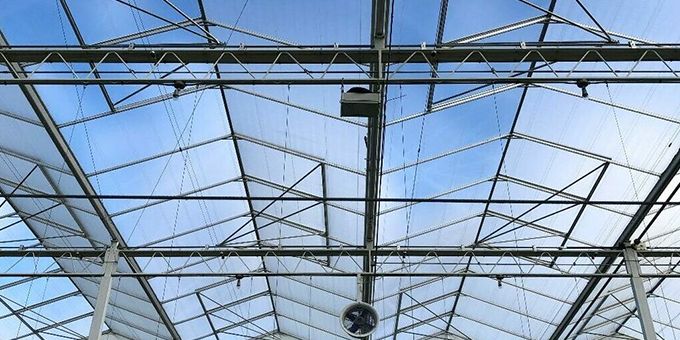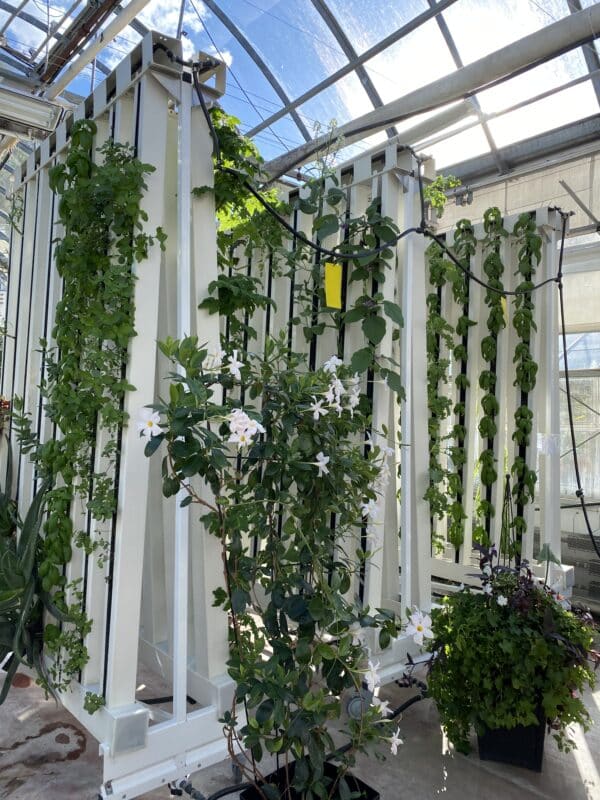Traditionally, most glass is produced as ‘clear glass’ – a staple in the growing industry for decades. Diffused glass can also help prevent sunburns from taking hold in the crop.
 Shedding Light on Diffused Glass Vs Clear Glass – Greenhouse
Shedding Light on Diffused Glass Vs Clear Glass – Greenhouse

Article from | Zipgrow
Each individual crop has its own specific light requirements to perform transpiration.
Higher light levels typically lead to higher transpiration rates, allowing photosynthesis to occur. During photosynthesis, plants can convert light energy into food (sugars) with the help of chlorophyll. Chlorophyll is the green pigment in plants responsible for capturing and storing this light energy.
Plants will then uptake carbon dioxide and release oxygen into the air.
Now, with basic science out of the way, how does a grower determine the amount of light needed for crops to grow efficiently?
The topic of light can be daunting and difficult for new hydroponic growers to grasp.
Before buying seeds and going straight into planting, research should be done on the crop of choice.
A simple way to categorize plants is to label them as low light, medium light, or full sun tolerant.
Specific types of glass can be installed to cater to the lighting needs of a particular crop. Crops such as tomatoes, peppers, and eggplants are high-wired and require full sun throughout the day. As the crop ages and lengthens with age, it becomes much more difficult for light to reach the inner canopy. Diffused glass helps to solve this issue as it breaks apart and scatters light throughout the growing space. This glass is produced with patterns that specifically break apart light once it penetrates through it.
Traditionally, most glass is produced as ‘clear glass’ – a staple in the growing industry for decades. Diffused glass can also help prevent sunburns from taking hold in the crop. During the months of July and August, new growth on peppers can be sunburnt if exposed to more extended periods of sunlight. Many new facilities are opting to install diffused glass, which prevents overexposure to sunlight and helps distribute that light energy throughout the growing space. However, the diffused glass comes with a higher cost as it’s usually custom-built for specific customers.
For small-scale farmers using polyethylene covers (plastic) for their operations, it is possible to install diffused greenhouse plastic instead. This is an excellent opportunity for growers to distribute light evenly throughout their greenhouse. A grower should notice better uniform growth in their crop over time. Depending on the budget, it is also a good idea to install white polyethylene plastic under your crops to help with reflecting light back into the plant canopy.
Diffused glass is an excellent alternative to traditional clear glass and maximizes plant activity through transpiration. However, the initial installation costs will be higher, but in the long term, expect sugar and fruit quality to improve.
Terms
Transpiration: Is the removal of excess water up taken by the roots of the plant. An active and optimal climate aids in promoting plant activity for transpiration to occur. When excess water is removed from the plant, it can more easily intake carbon dioxide from the environment which it uses for photosynthesis.
Photosynthesis: Is the process in which plants use light energy to synthesize foods (sugars) from carbon dioxide and water. Photosynthesis is enhanced when the leaf structures of the plants are green. The green colour associated with a healthy plant is referred to as “chlorophyll”.
Chlorophyll: Chlorophyll are the green pigments found in plants that are responsible for capturing and storing this light energy. Therefore, the more greenery in the leaves, the more light energy can be absorbed and used in photosynthesis to produce more food (sugars).
The content & opinions in this article are the author’s and do not necessarily represent the views of AgriTechTomorrow
Comments (0)
This post does not have any comments. Be the first to leave a comment below.
Featured Product



.png)
